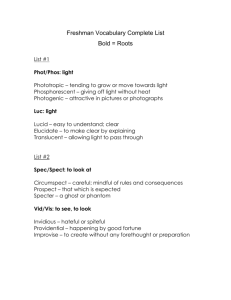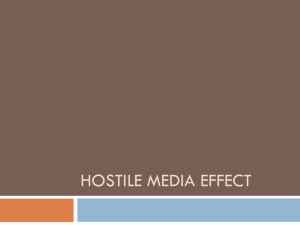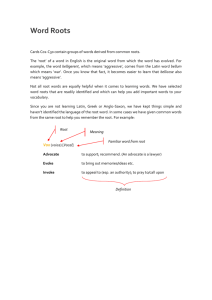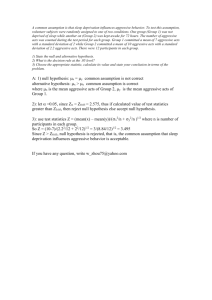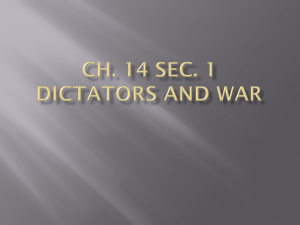Formulating Market Entry Strategy
advertisement
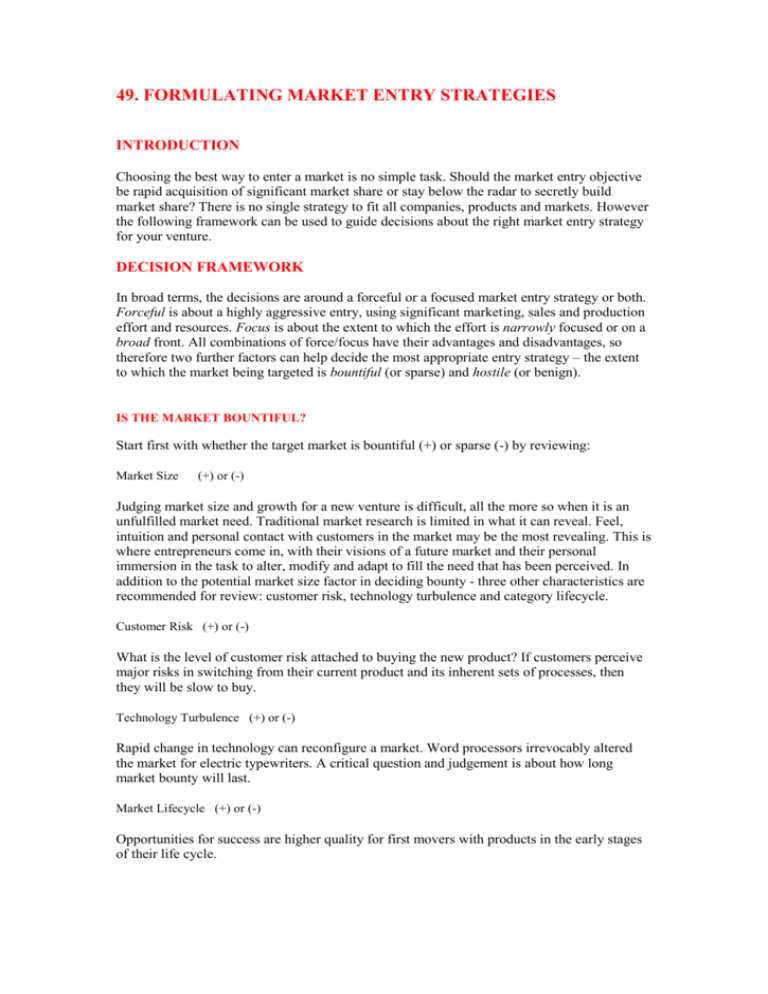
49. FORMULATING MARKET ENTRY STRATEGIES INTRODUCTION Choosing the best way to enter a market is no simple task. Should the market entry objective be rapid acquisition of significant market share or stay below the radar to secretly build market share? There is no single strategy to fit all companies, products and markets. However the following framework can be used to guide decisions about the right market entry strategy for your venture. DECISION FRAMEWORK In broad terms, the decisions are around a forceful or a focused market entry strategy or both. Forceful is about a highly aggressive entry, using significant marketing, sales and production effort and resources. Focus is about the extent to which the effort is narrowly focused or on a broad front. All combinations of force/focus have their advantages and disadvantages, so therefore two further factors can help decide the most appropriate entry strategy – the extent to which the market being targeted is bountiful (or sparse) and hostile (or benign). IS THE MARKET BOUNTIFUL? Start first with whether the target market is bountiful (+) or sparse (-) by reviewing: Market Size (+) or (-) Judging market size and growth for a new venture is difficult, all the more so when it is an unfulfilled market need. Traditional market research is limited in what it can reveal. Feel, intuition and personal contact with customers in the market may be the most revealing. This is where entrepreneurs come in, with their visions of a future market and their personal immersion in the task to alter, modify and adapt to fill the need that has been perceived. In addition to the potential market size factor in deciding bounty - three other characteristics are recommended for review: customer risk, technology turbulence and category lifecycle. Customer Risk (+) or (-) What is the level of customer risk attached to buying the new product? If customers perceive major risks in switching from their current product and its inherent sets of processes, then they will be slow to buy. Technology Turbulence (+) or (-) Rapid change in technology can reconfigure a market. Word processors irrevocably altered the market for electric typewriters. A critical question and judgement is about how long market bounty will last. Market Lifecycle (+) or (-) Opportunities for success are higher quality for first movers with products in the early stages of their life cycle. IS IT HOSTILE ? Then assess the level of market hostility, by reviewing: Competition Levels (+) or (-) Competition is the principal key to determining hostility of a market. If a market is crowded with competitors and the business is crucial to their success, then the market will be very hostile. Fragmented competitors and no clear leadership may mean a benign market. Market Share (+) or (-) The combined market share of the 3 or 4 main players is a strong indicator of the extent to which they are entrenched and an indication of how much may be left for the new entrant. Salience of the product to the competitor will determine their competitive response. Dependence (+) or (-) If they are highly dependent on the product for their success, then they will respond aggressively. Market Capacity / Size (+) or (-) Market hostility is also affected by industry capacity compared to market size. When capacity is greater then market size, competitive action will be intense and entry may not be sensible at all. Government Regulation (+) or (-) Regulations may make a market hostile, in terms of onerous compliance. ENTRY STRATEGY DECISION Then use the Market Entry Strategy Formulation Chart (below) as a decision- support-tool. It simplifies the decision making process around two levels of aggressive entry: AGGRESSIVE NON-AGGRESSIVE and whether this is then conducted across: FOCUSSED ENTRY BROAD FRONT ENTRY The degree of aggressiveness will be in the timing, spend and effort put into activities like; advertising, sales promotions, marketing and sales organisations, pricing, production, services to customers, discounts, introductory deals and publicity. The degree of focus will be about the number of market segments initially addressed, geographical reach and the size/range of product line. 1. THE BLITZKRIEG ENTRY ( AGGRESSIVE –BROAD FRONT) This is a highly aggressive, broad-front strategy using all forces across a wide scope of geography and market segments. Because this strategy requires rapid market penetration, it probably would not be appropriate where there is not a bountiful market. 2. THE CAVALRY CHARGE ( AGGRESSIVE - FOCUSSED) This strategy is highly aggressive and focused. All the elements of aggression are still used, but in limited deployment to specific market segments and geographies. In building a cavalry charge for a technology product, one application would be promoted in a concentrated way to ensure early success. The cavalry charge requires a munificence market, but not so hostile that market segments into which entry is deferred are not lost to competition. 3. THE STRIKE FORCE ( NON-AGGRESSIVE - FOCUSSED) This is a non-aggressive and focused entry strategy. It is a low key, calculated entry into a narrowly defined market. This strategy might be appropriate to a market that is sparse and hostile. It is a back-door’, below the radar, mode. 4. GUERILLA TACTICS ( NON-AGGRESSIVE – BROAD FRONT) The guerrilla approach is a non-aggressive and broad-front market entry. It uses relatively low resources to target the most promising positions in markets that are munificent, but hostile. It can also be used to explore markets to focus on later without generating strong competitive interest or counteraction. Overleaf ……………………Market Entry Strategy- Decision Formulation Chart Market Entry Strategy- Decision Formulation Chart DECISION FACTORS BLITZKRIEG ENTRY CAVALRY CHARGE STRIKE FORCE GUERILLA TACTICS (+) (+) (+) (-) (-) (+) (+) (-) (+) (-) (-) (+) (+) (-) (+) (-) (+) (-) (+) (+) (+) (+) (-) (+) (-) (-) (+) (-) (-) (+) (-) (+) (+) (-) N N (-) (+) (-) (+) (+) (+) (+) (+) (-) (+) (-) (-) (+) (-) (+) N (+) (+) N (+) (+) (-) (+) (-) N (+) N (+) (+) (-) (+) (-) N (+) N (-) (+) (-) (+) (-) (+) (-) (+) (-) 1. MARKET CONDITIONS HOSTILE BENIGN BOUNTIFUL SPARSE 2. COMPANY RESOURCES AMPLE RESTRICTED CRITICAL MASS NEEDED 3. DIVERSITY GREAT (POOR FIT) SMALL ( GOOD FIT) 4. COMPANY CULTURE RISK AVERSE EXPERIMENTAL 5. MARKET LIFE CYCLE EARLY STAGE DEVELOPED STAGE MATURE STAGE 6. MARKET SALIENCY HIGH TO ENTRY FIRM LOW TO ENTRY FIRM 7. THREAT TO EXISTING CUSTOMERS LOW HIGH 8. PROPRIETARY PROTECTION STRONG WEAK (+) = Appropriate / necessary strategy (-) = Not appropriate/not necessary N = neutral
